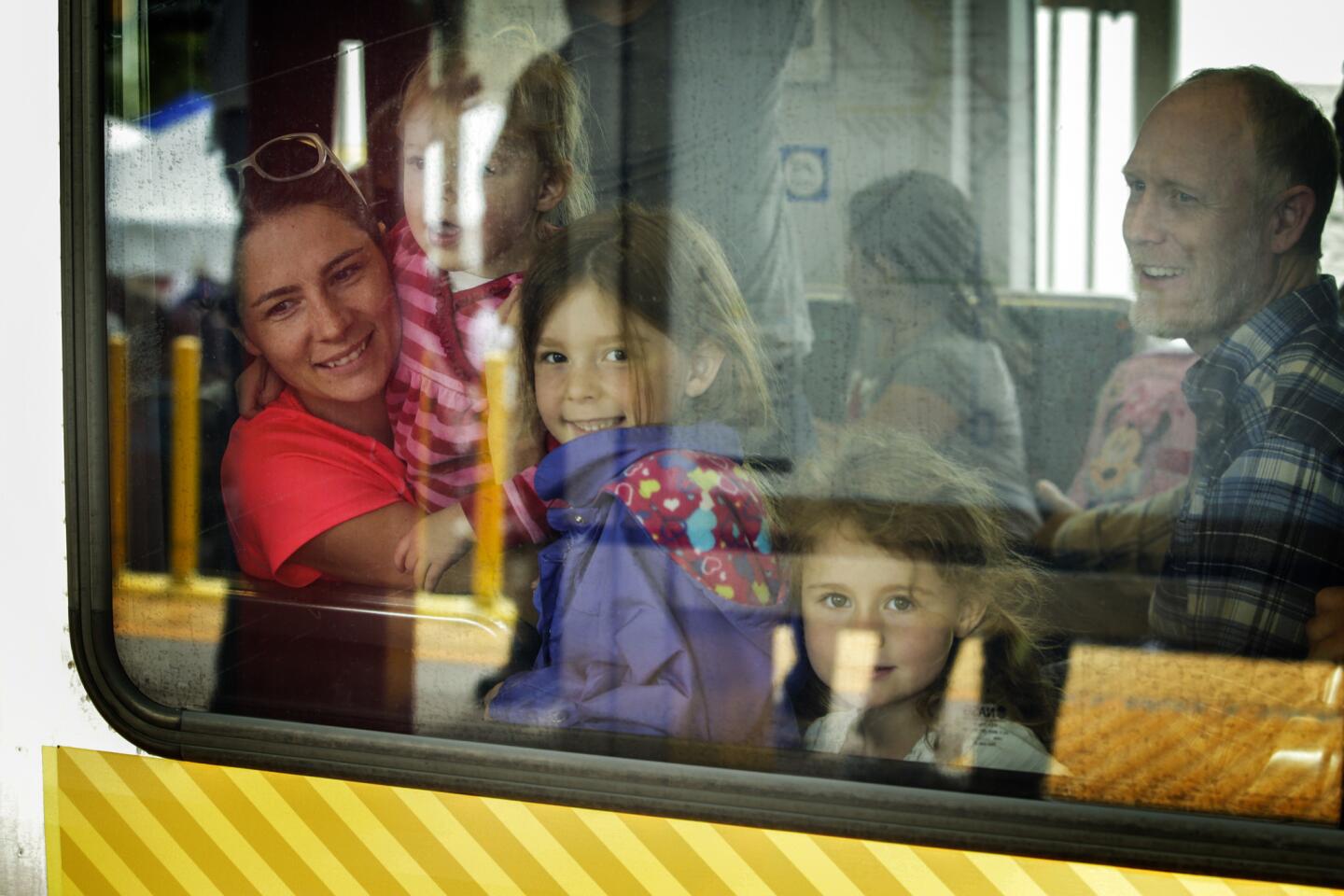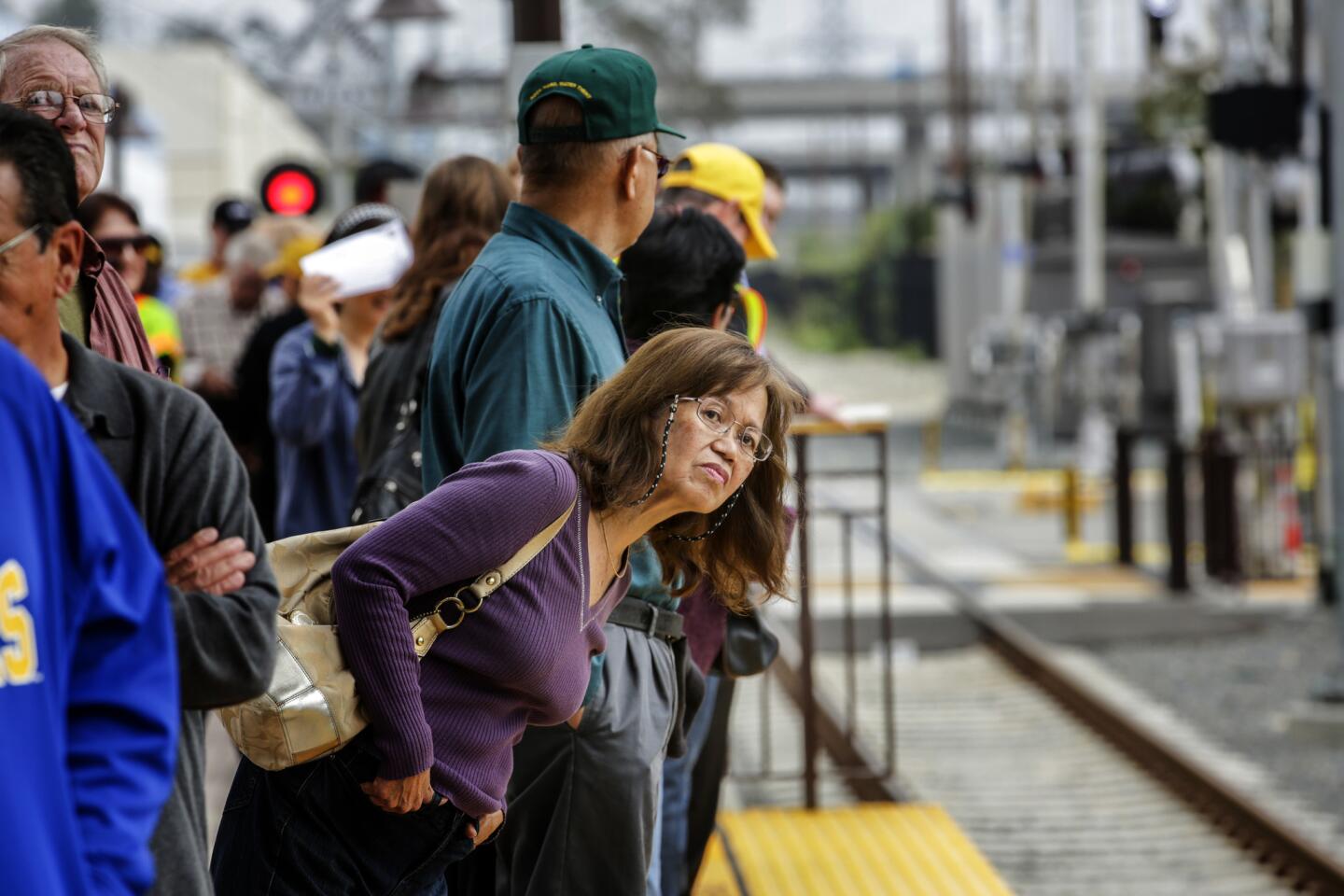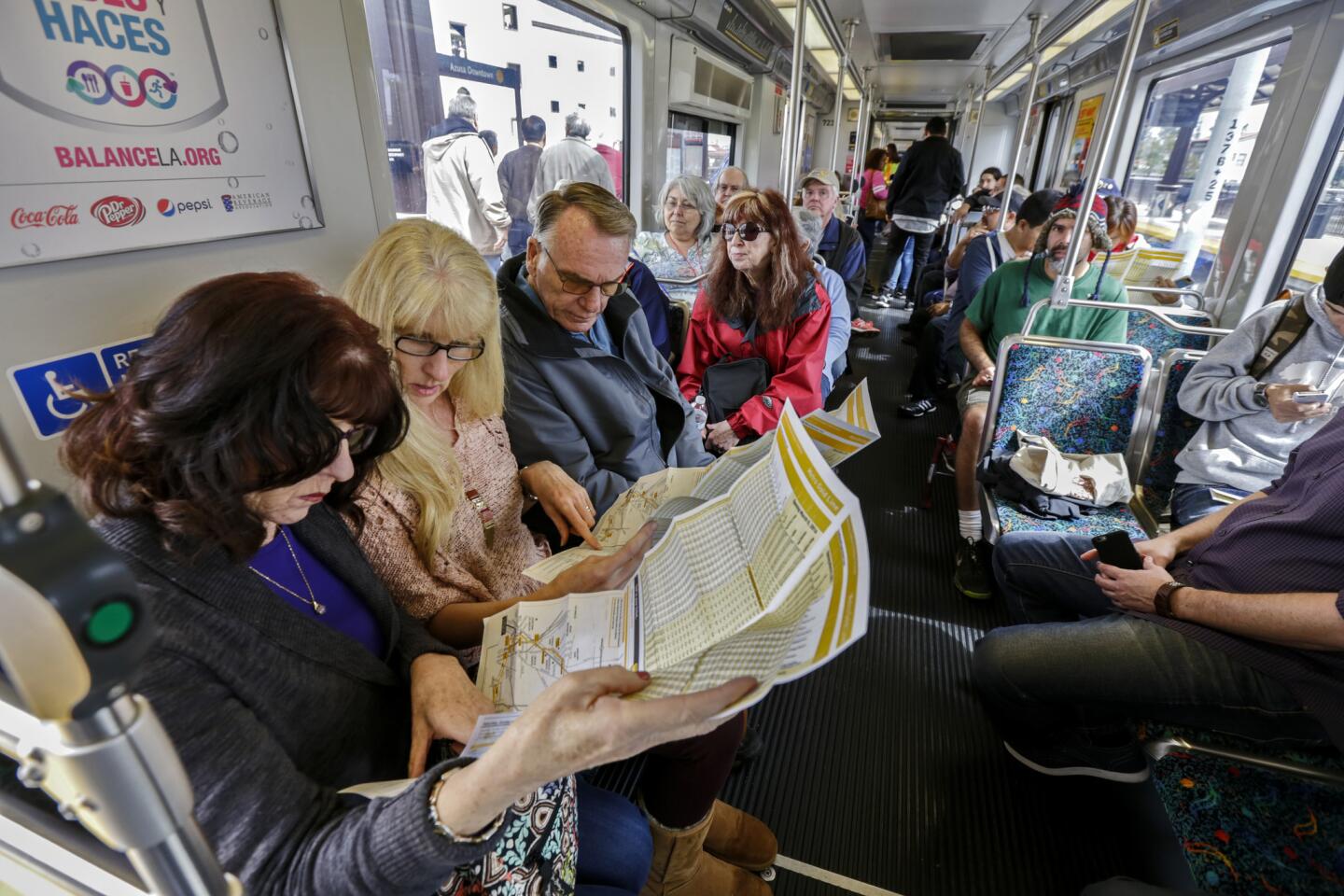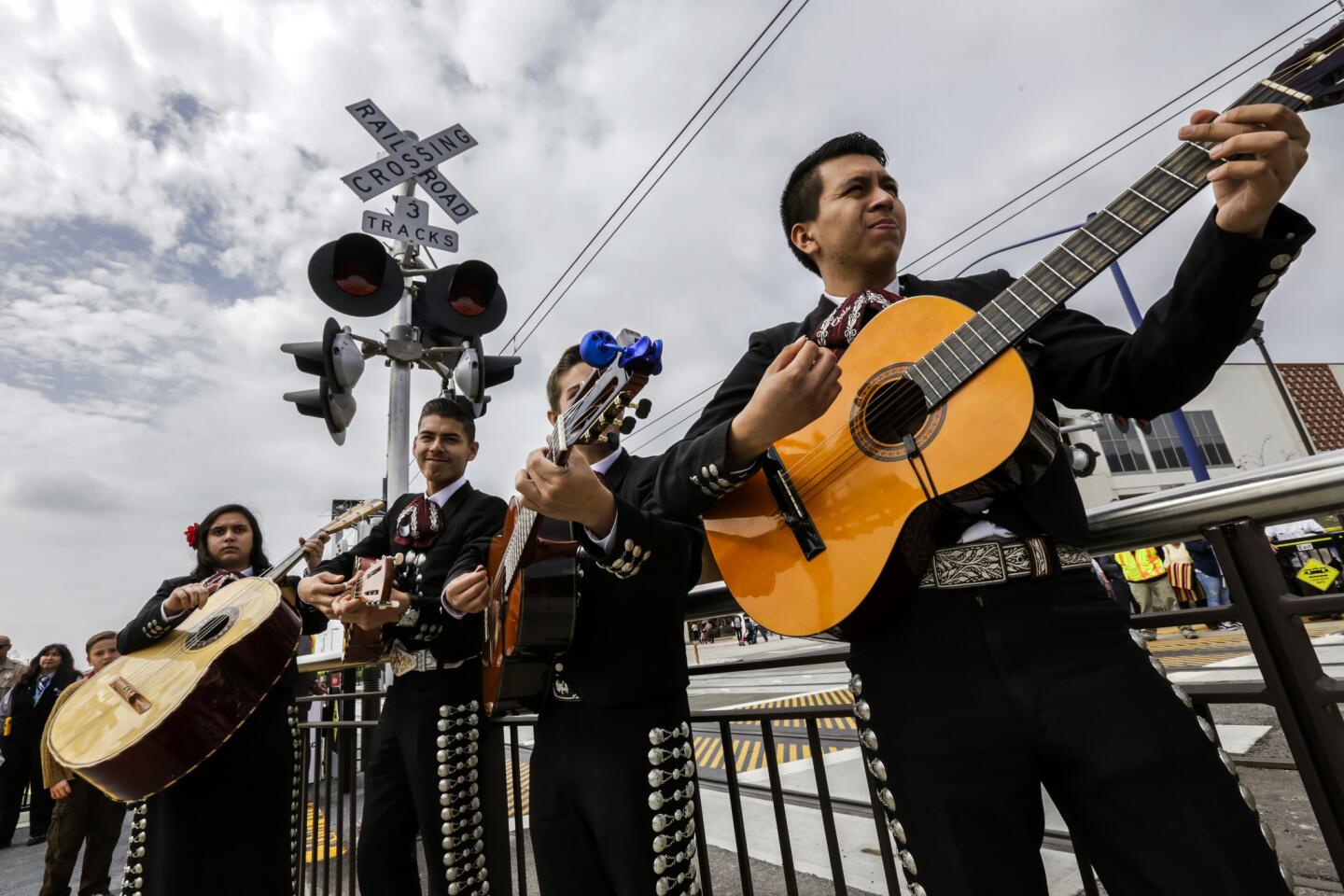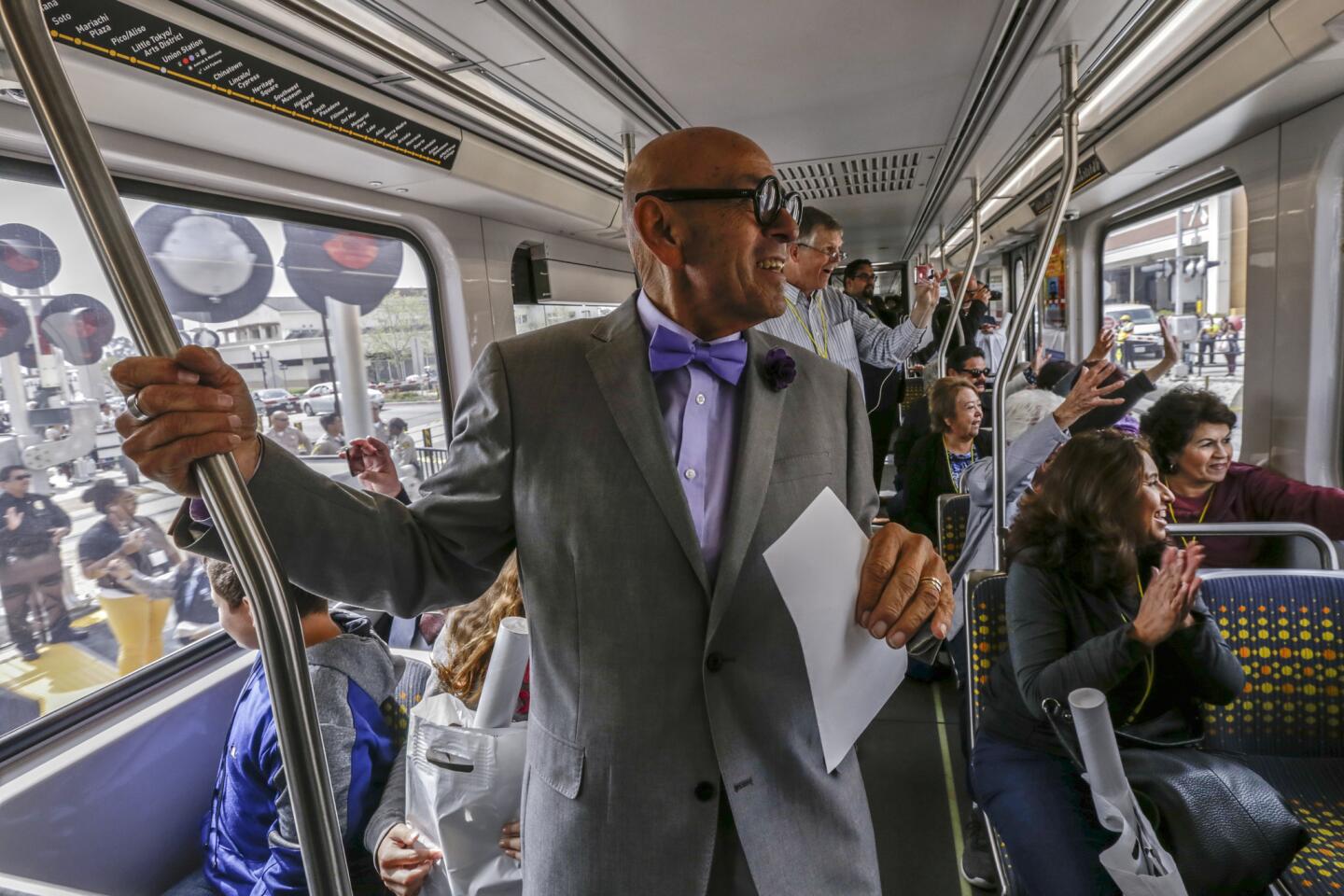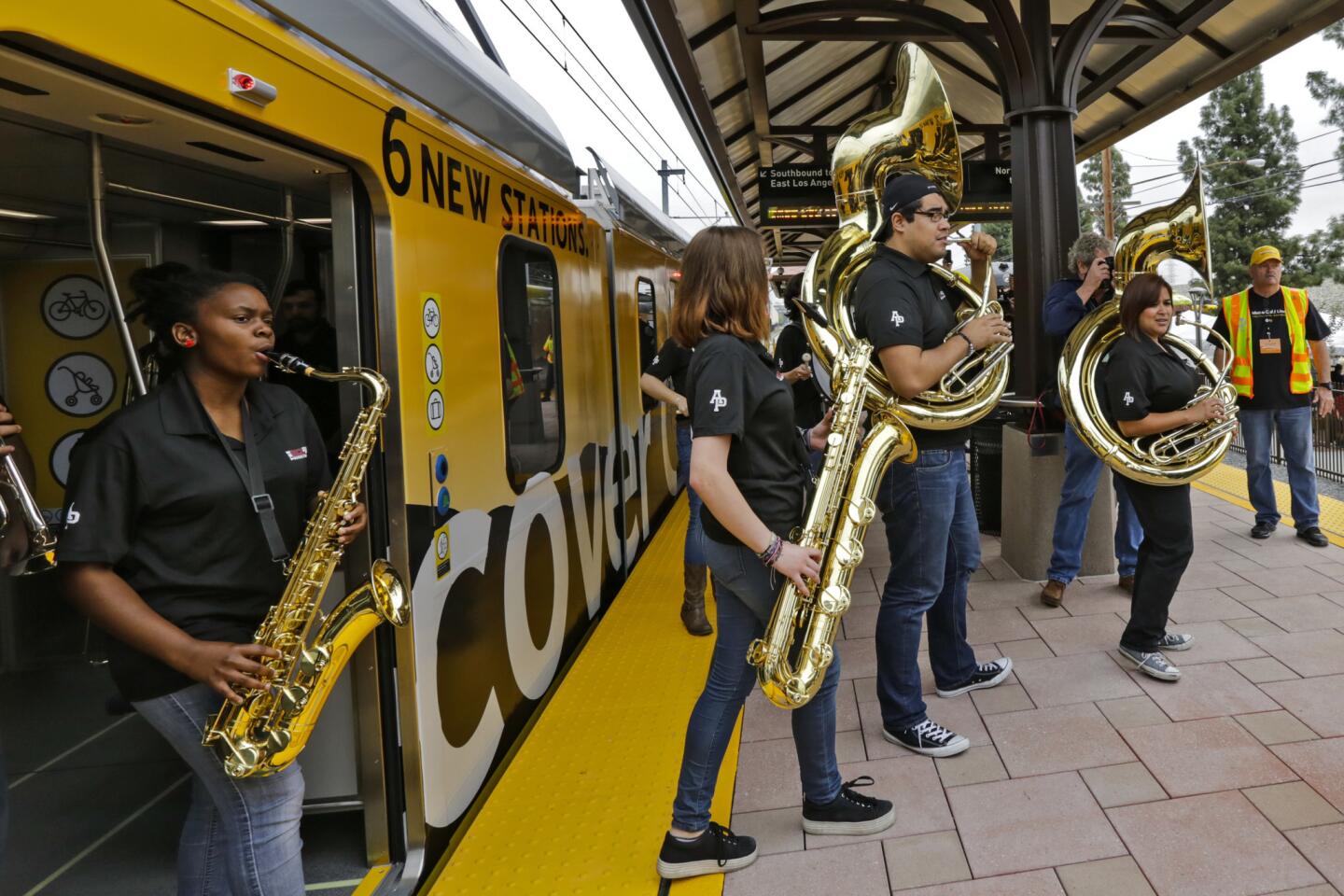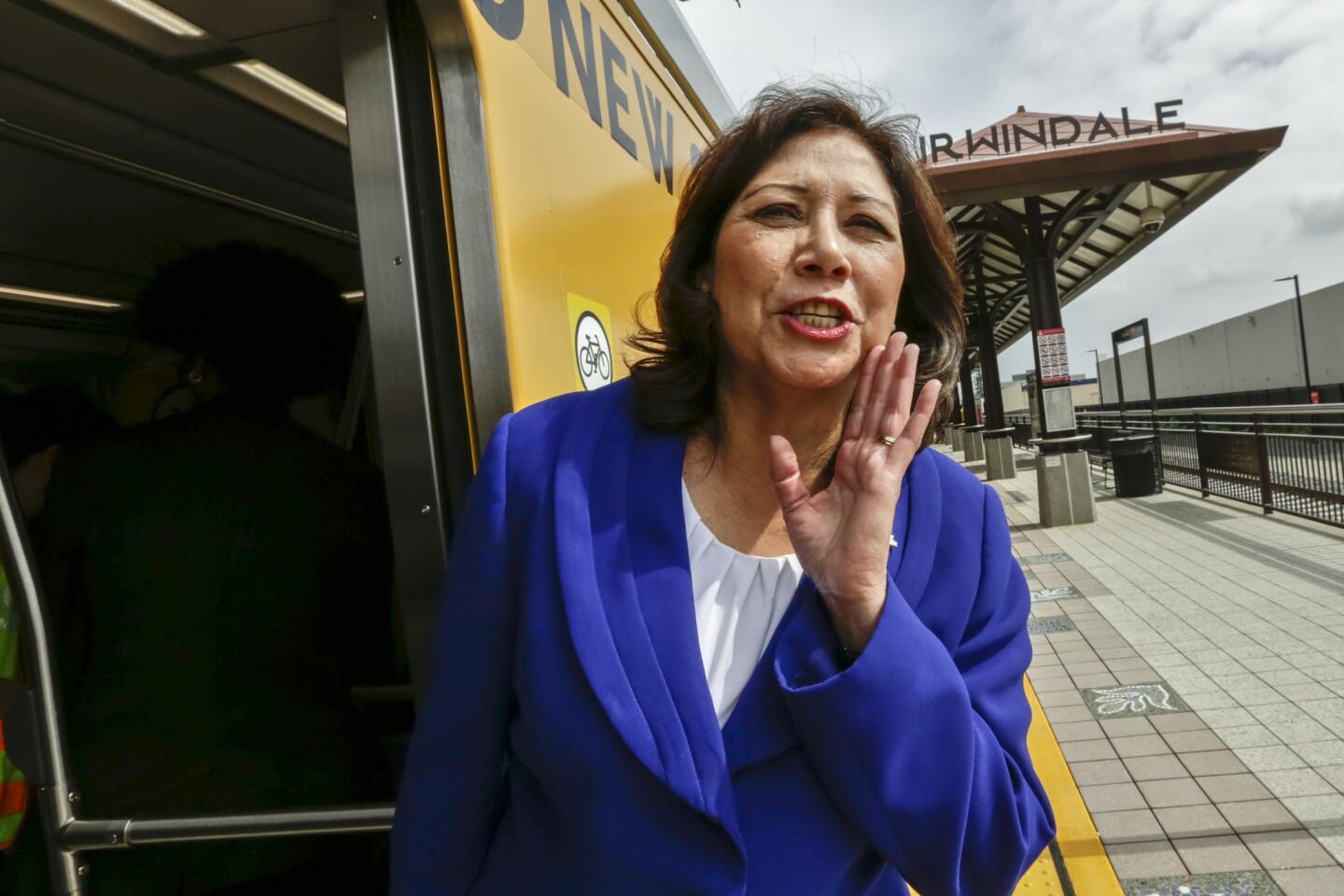Thousands celebrate launch of the Gold Line extension through San Gabriel Valley
- Share via
Thousands of Angelenos flocked to the San Gabriel Valley on Saturday to celebrate a major regional milestone: the first stretch of rail to carry passengers through the foothills in more than five decades.
The $1-billion, 11.5-mile extension of the Gold Line stretches east from Pasadena through the cities of Arcadia, Monrovia, Duarte, Irwindale and Azusa. It is Los Angeles County’s first new section of rail in nearly four years, and the first to be built and opened with funding from Measure R, the half-cent sales tax hike for transportation projects that county voters approved in 2008.
During a ribbon-cutting ceremony under gray skies, officials from the Metropolitan Transportation Authority and cities along the route said the line would transform the lives and commutes of San Gabriel Valley residents who spend hours a day on the 210 Freeway. Others said the route, which connects Azusa Pacific University and Citrus College to the region’s growing rail network, will open doors for students who can’t afford to drive.
NEWSLETTER: Get essential California headlines delivered daily >>
As the first sleek yellow-and-silver train with passengers on board pulled out of the Sierra Madre Villa station on Saturday, riders standing shoulder to shoulder crowded around the windows and held up smartphones to snap photos.
“Imagine if they’d built this in the 1960s, when they first started talking about it,” said Ross Glazier, 57 of South Pasadena, as he gazed out the window. As the train pulled into the Arcadia station, Glazier and his friend Rob Nesbitt, 77, craned their necks to look for the iconic Van de Kamp windmill, now a Denny’s, on Huntington Drive. Its blades were barely visible over the station’s parking garage.

Thousands of Angelenos flocked to the San Gabriel Valley on Saturday to celebrate a major regional milestone: the first stretch of rail to carry passengers through the Foothills in more than five decades.
The train hummed down the tracks, and joggers and families on nearby sidewalks stopped to watch it pass by. In Arcadia, passengers were greeted by a red-coated bugler from Santa Anita Park, a half-mile walk from the station. In Monrovia, children played in a bounce house and on the soft grass of the new community band shell.
“What was once a dream has now become a reality,” said Joe Rocha, Azusa’s mayor. As a child, he rode the Pacific Electric streetcars to Monrovia, he said, and loved peering out the window to watch the world flash by.
About 3,500 people per hour rode the train Saturday, Metro spokesman Dave Sotero said. The agency expected to carry 20,000 to 30,000 boardings by the end of the day.
What was once a dream has now become a reality.
— Joe Rocha, mayor of Azusa
The Gold Line is now the county’s longest light-rail line, stretching 31 miles through Pasadena, Highland Park, downtown Los Angeles and the cultural hubs of Chinatown and Boyle Heights.
From the line’s new terminus in Azusa, the $1.75 one-way ride to Union Station will take 49 minutes. From there, passengers can transfer to Metrolink and Amtrak, continue on the Gold Line to East Los Angeles, or transfer to another Metro rail line.
“I had been counting down the days, to be honest,” said Erika Reyes, 32, of Monrovia. Until Saturday, she said, she had been driving to the Gold Line’s previous terminus in Pasadena, parking, and boarding the train to get to her job in Highland Park. Her new drive to the Monrovia station will only take five minutes.
Advocates for the Foothill extension, which was once a shipping route for California’s citrus fruits, fought for more than a decade for the line to be funded and built. Now, they’ve turned their attention to extending it further east, through Glendora, San Dimas, La Verne, Pomona, Claremont and Montclair. Some transportation officials have dubbed the line “the Brain Train” because it will connect Azusa Pacific University, Citrus College and the Claremont Consortium.
That extension is seen as a favorite for a list of projects that Metro would fund if county voters approve another sales tax increase in November.
So many people rode to the end of the line, at the APU/Citrus College station, that the line to board trains back to Los Angeles doubled back through the parking structure several times. The 45-minute wait prompted some to venture into a nearby neighborhood, settling on benches and neat sandstone walls to call a ride or an Uber.
“I’m wondering, could you come pick us up?” one harried woman asked, clutching her toddler son’s hand, ducking under a parking garage overhang to avoid the light rain. “I’m just not sure we can wait that long.”
But even in line, the crowd was mostly cheerful and optimistic, talking about the train and their memories of L.A.’s transit past. Chuck Pace, 71, recalled walking through orange groves and over the train tracks where Metro trains now run to get to class at Citrus College. The change, he said, was a happy one.
Twitter: @laura_nelson
ALSO
Measuring income along L.A.’s Metro stations
Metro Gold Line extension tests San Gabriel Valley’s support for transit
Opinion: With Gold Line opening, Metro needs to see what’s driving millennials to hop on board
More to Read
Sign up for Essential California
The most important California stories and recommendations in your inbox every morning.
You may occasionally receive promotional content from the Los Angeles Times.
